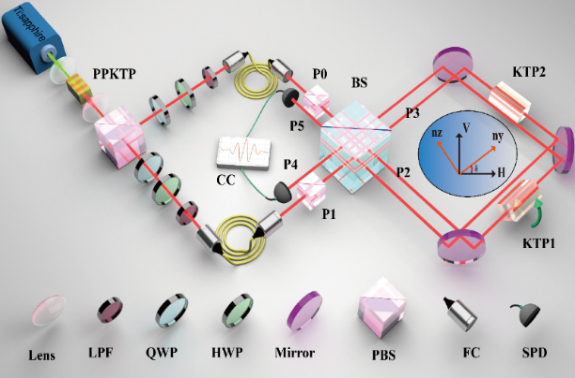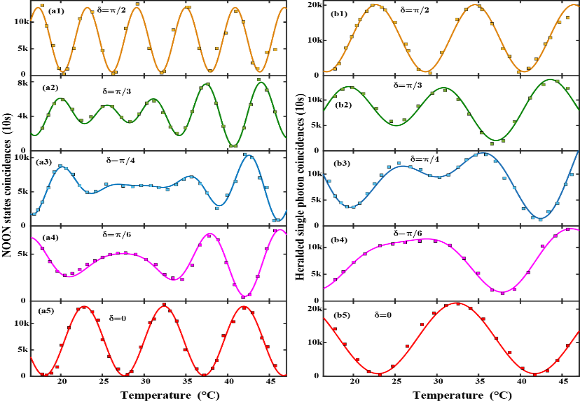By successfully constructing a quantum optical model for a birefringent interferometer, Prof. SHI Baosen’s team revealed for the first time the interference behavior of photons in this interferometer, and experimental demonstration agrees very well with the theoretical predictions. Main results have been published in “Physical Review Letters” [Phys. Rev. Lett. 120, 263601(2018)]. The work is carried out at The CAS Key Laboratory of Quantum Information, led by academician GUO Guangcan.
Interferometer is an indispensable tool widely used in optical researches and other scientific fields, but the fundamental understanding of photon interference is still under debate. Once we know how a photon behaves in a certain interference process, we can better apply this behavior for high precision metrology. Thus, how to obtain stable interference fringes and more parameters in a single interference fringe is the long pursued aim in interference based precision optical metrology.
Prof. SHI Baosen, Associate Researcher ZHOU Zhiyuan and their collaborators constructed the general quantum optical model for a birefringent interferometer first, then they designed a passively stable Mach-Zehnder interferometer (MZI) to demonstrate the theoretical predictions. Two KTP crystals are inserted in two arms of the MZI, one for phase compensate and the other as a testing sample.
For both cases, temperature beating fringes depending on the rotation angle of the sample in testing was observed, and the two photon interference fringes beat 2 times faster than single-photon, showing super-resolution in phase measurement for two-photon input case. This way thermal dispersion coefficients for both optical axes of the KTP crystal can be determined with a single interference fringe. They also found that the polarization decoherence increases with the increasing of photon bandwidth, which results in decrease of interference visibilities for both single and two-photon input cases. The experimental observations are in perfect agreement with the theoretical predictions.

Figure 1. Experimental setups for the experiments.(Image by ZHOU Zhiyuan)

Figure 2. two-photon and single photon temperature beating curves at different rotation angles. Left column of figures are for two-photon input case; right column the corresponding single photon input case.(Image by ZHOU Zhiyuan).
Finally, they pointed out that for single photon beating phenomena is not limited with true single photon input, but also with lasers. Moreover, the theoretical model can be extended for measuring the wavelength dispersion and electro-optical coefficient of the birefringent crystal, shedding light on the nature of photon and for precision optical metrology.
This work is supported by the National Natural Science Foundation of China (NSFC); the National Key Research and Development Program of China; the Anhui Initiative In Quantum Information Technologies; the China Postdoctoral Science Foundation; and the Fundamental Research Funds for the Central Universities.
(School of Physical Sciences, Edited by GUO Jianjian, USTC News Center)
Contact:
FAN Qiong
Tel: +86-63607280
E-mail:englishnews@ustc.edu.cn